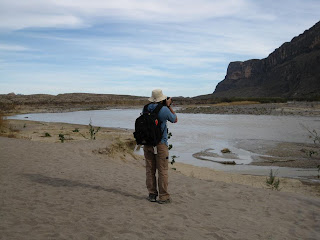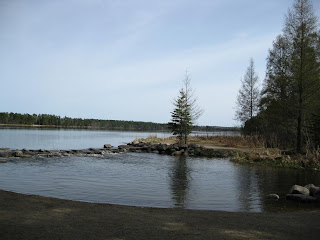For the last week I have been on a mission to learn more about my family--a mission Adolfo is glad to have finished. Still, I think he liked my family and had a good time.

First we went to Bartlesville, Oklahoma where we stayed with my first cousin once removed, Bernie Baldwin. He is a history buff and antiques collector. He collects classic cars and fixes them up. Like me, he has tons of projects, and not nearly enough time to do them all. Bernie took us in on very little notice and toured us around the city. We had a great time getting to know him better and seeing Bartlesville—-a small city with a lot of character. Just before we left, my second cousin and her children came over too. I hadn't seen them for years and it was fun to get to know them as well.
Photo: Bernie and Kim Baldwin
After leaving Bartlesville, we took off for Missouri. The town of Versailles has interested me for years since all roads on my father's genealogy seem to lead back to this town and the Bethel Mennonite Church. I sent an email to the one person I've communicated with in Versailles, but got no response since the email I had was his work address, and it was a weekend. Since we were there on Sunday, I decided just to show up at the church and see what I could find. It was Easter Sunday.
Adolfo and I didn't know what to expect of the church. Would this be a very traditional church where women wore bonnets? The nicest clothing I have is a pair of black pants; would this be acceptable? As we drove up the lane to the church, we passed a parking lot full of horse and buggies.
Tell me this is not the church, I thought. It wasn't, the Bethel church was at the end of the road with contemporary cars sitting out front. To the side was the cemetery where so many of my ancestors are buried. We were late for Sunday school, and early for church, so Adolfo and I decided to walk through the cemetery. There we found plots for Ulrich and Caroline Aeschbacher, my great great grandparents. I found the plot for my grandpa's brother Ralph who died when he was just 6 years old. The tombstones in the cemetery all had names I recognized from my genealogical research--Aeschbachers, Baumgartners, Garbers, Gerbers, Lehmans, Hiltys, and Mosers. I could find ties to almost every name in the Aeschbacher family tree.
As Adolfo and I walked back toward the church, a woman asked if we needed some help. I introduced myself and explained that I was looking for family. She introduced herself as Brenda Hilty. I laughed. The first person I met was a relative. She married my great uncle's brother's son. I explained that Calvin Hilty was my great uncle. Brenda took me into the church where Ken Aeschbacher was teaching Sunday school. Before and after church, Brenda introduced me to many other relatives. I Uncle Calvin Hilty's only surviving sister, Dorothy.
After church, Brenda and Phil Hilty invited me and Adolfo to crash their Easter Dinner. I felt bad interrupting their family dinner, but I was excited to get to know them better. The food was wonderful, and it was such a great pleasure to learn more about their family. Again, these are wonderful people. I have awesome relatives.
On Monday I went downtown to see what information I could get from the Chamber of Commerce, Library, Historical Society, and the Kidwell-Garber Funeral Home. Brenda said she worked for the Versailles Bank, so I stopped by to say hello. While talking, she called the funeral home because Raymond Garber, an owner, is married to Suzanne Aeschbacher, my grandfather's cousin. Unfortunatly, Suzanne and Raymond were not in. Also the library, chamber of congress, and historical society were all closed. Bummer. After walking around downtown a bit, Adolfo and I took off.

Photo:Vincil Aeschbacher, Bruce Aeschbacher, Ken Aeschbacher
I called Bruce Aeschbacher, my original contact, and he contacted his father, Vincil, and uncle, Ken. They invited me to meet with them at Bruce's house. They then took me around the community and pointed out the homes of the family. They showed me the original home of Ulrich and their later home. We walked through the barn that Ulrich had built. They took me past other homes owned by Aeschbachers, Hiltys, Garbers...etc. I even saw the old school house where my grandpa and great grandpa had gone to school.
We decided to leave on Tuesday, but before we did, I took one last trip to downtown Versailles. This time I did meet Raymond Garber of the funeral home. He shared some files with me. Then I went to the library. The library had a large section for genealogy, and I had a half hour to explore it. I copied a few materials before I had to leave. Jeez, I could have spent several days there going through all those materials.
As we left town, I called Suzanne Aeschbacher Garber. She is 94 years old. We talked for a short time before my phone cut out. I hope I can call her again and talk longer in the next few days. It was hard to do on a cell phone, though.
This experience has been very moving for me. Perhaps you have to be into genealogy to understand, or perhaps you just have to have such a loving family.
 Ulrich and Caroline Aeschbacher's Barn
Ulrich and Caroline Aeschbacher's Barn




















































